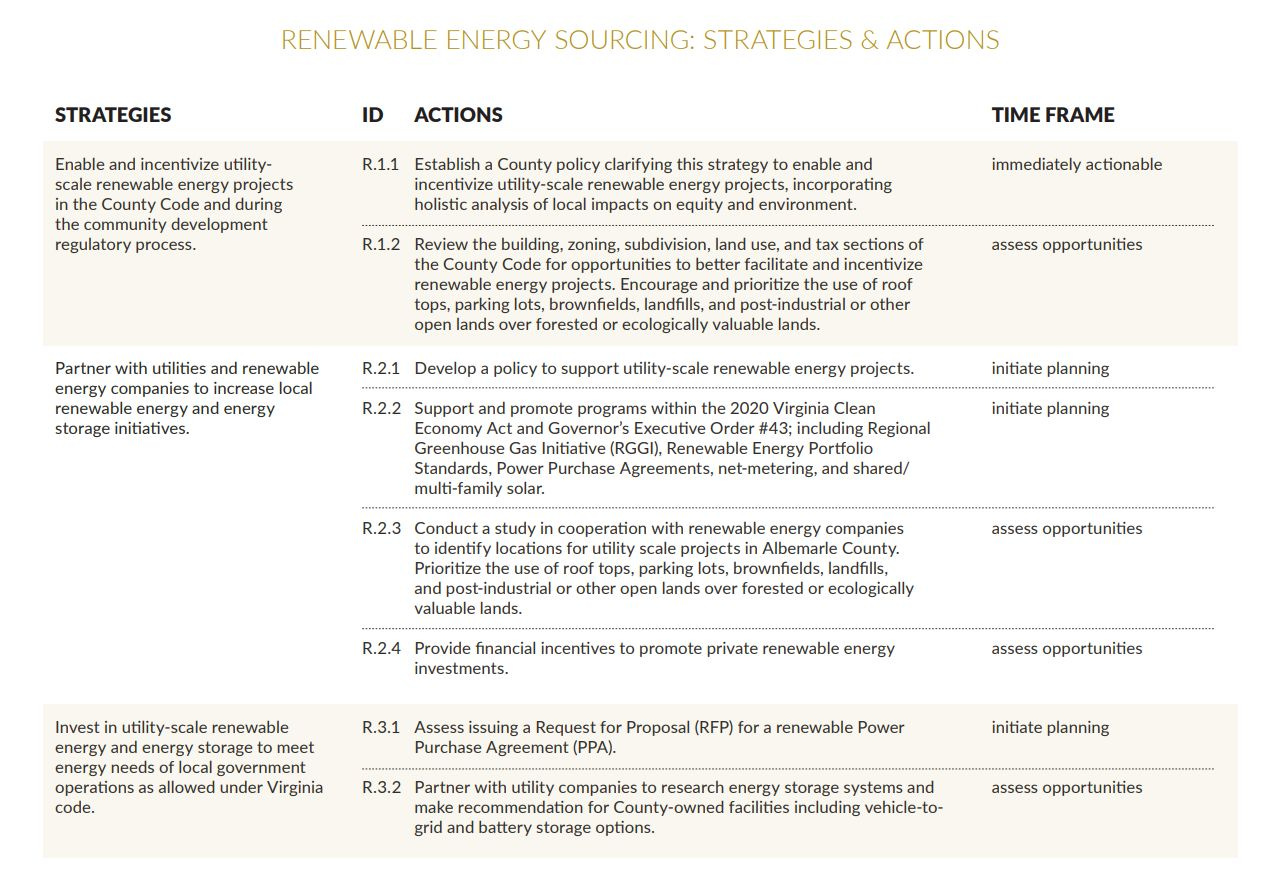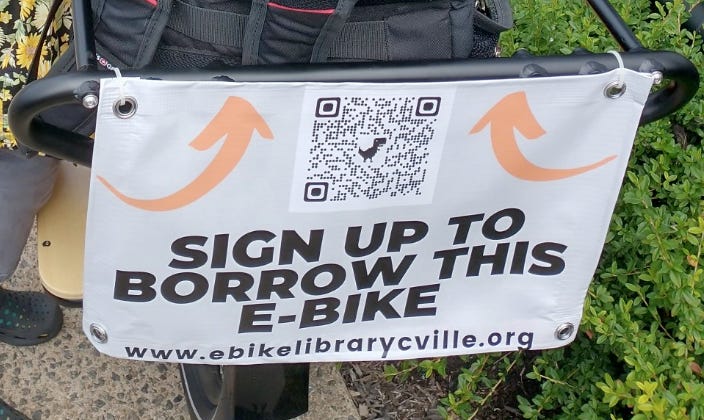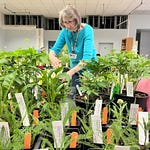Happy Independence Day for Algeria and a bountiful Armenian Constitution Day! While we’re at it, July 5 is also Venezuelan Independence Day. Every single day there’s something happening that reminds me of the diversity of the planet I share with you and billions of other people. Charlottesville Community Engagement exists to draw your attention to some of the details of what’s happening around 38.0293° N, 78.4767° W. I’m Sean Tubbs.
On today’s program:
Michael C. Rogers has withdrawn from consideration for Charlottesvillle’s next city manager
Two years after announcing route changes that were never made, Charlottesville Area Transit launches a strategic plan process complete with survey
Albemarle County Supervisors are briefed on the potential of adding more development standards and rules to siting utility-scale solar projects
First shout-out: Charlottesville Community Bikes
In today’s first subscriber supported shout-out, Charlottesville Community Bikes believes that bicycles can be a means to social change, addressing issues of equity, access, and inclusion. They provide free bikes to adults who need one, and have a special program that provides free bikes to children. Want to learn more or support their work? Visit charlottesvillecommunitybikes.org to learn more.
Rogers withdraws from consideration as City Manager
The city of Charlottesville will soon have a new City Manager after a year and a half of service from an employee of a government services firm.
Interim City Manager Michael C. Rogers has announced to city staff that he will withdraw from consideration to be hired as the permanent top official.
“While I would have loved to continue working with Council and beside all of you to serve the residents of this great city, personal priorities require that I return home to the District of Columbia full time,” Rogers said in the statement.
Rogers is an employee of the Robert Bobb Group, a D.C. based firm that provides services to localities across the country. The statement points out that Robert Bobb, the company’s main principal, has assisted Rogers in his time as interim city manager.
Council has met several times to interview candidates for the position. At a campaign forum on May 10, Charlottesville Mayor Lloyd Snook said he had hoped the permanent hire would be in place by July 1. Today he’s told me that Council hopes to make an announcement some time next week.
Read more of that story from May to get the sense of Snook and Councilor Michael Payne about what kind no person they’d like to see in the role.
More planning in the works for Charlottesville Area Transit
A major key to a future in which more people live here will be getting more people on area buses. There are no shortage of plans currently underway or from the recent past that aspire to do just that.
Over two years ago, CAT had hired Kimley Horn and Nelson Nygaard group to create a series of route changes that were never made. This is different from the Transit Development Plan from the spring of 2018.
Council was briefed on the changes in late May 2021, as I wrote about at the time. Unfortunately, the link to the presentation as well as references to that work are no longer on the CAT website.
In October 2022, CAT manager Garland Williams explained why the route changes had not been made.
“CAT doesn’t have enough operators to implement the proposed routes enhancements presented to City Council last year,” he wrote me at the time.
Council briefed on proposed transit changes, June 2, 2021
Regional Transit Partnership talks park and ride, future bus type, and CAT changes, July 4, 2021
Next steps for Charlottesville Area Transit route changes outlined at partnership meeting, June 24, 2022
Soon after that, the Thomas Jefferson Planning District Commission began a Regional Transit Vision Plan funded by Albemarle County and Charlottesville that recommended a theoretical expansion of the entire system. That work culminated in a governance study that is underway that could lead to formation of a regional transportation authority to help pay for more service.
Public meeting tonight for Regional Transit Vision Plan, Fluvanna and Louisa Supervisors briefed last week, June 23, 2022
Albemarle and Charlottesville officials weigh in on regional transit vision, June 14, 2022
Regional transit vision plan nearing completion, November 2, 2022
Governance study: A primer on regional transit systems, December 15, 2022
Two out of five phases complete for transit governance study, April 5, 2023
CAT is also responsible for providing microtransit service in Albemarle County for a one-year pilot that does not yet have a start date.
Studying the expansion of transit in Albemarle County[, August 11, 2021
Charlottesville Area Transit to operate on-demand demonstration project in Albemarle, August 24, 2022
Deadline extended for firms to apply for run microtransit for CAT on behalf of Albemarle County, April 13, 2023
Council briefed on Albemarle microtransit program, June 18, 2023
With all that as background, this week CAT begins the public engagement phase for a Transit Strategic Plan.
“Transit Strategic Plans are required for transit agencies operating in metropolitan areas of Virginia to ensure that transit services are planned to better meet their communities' mobility needs,” reads the website for the plan. “This presents CAT with an opportunity to evaluate and update our services and network to respond to changes in our community.”
Now CAT wants your feedback and there’s a survey that runs through July 31. There are also two pop-up events to learn more with one happening Saturday from 9 a.m. to noon at the Charlottesville City Market and one on Wednesday at the Downtown Transit Station from 3 p.m. to 7 p.m.
Second shout-out: eBike Lending Library
In today’s second subscriber supported shout-out, one Patreon supporter wants you to know that Charlottesville now has an eBike Lending Library! E-bikes are a great way to get around the community but there are many brands and styles to choose from. Because many e-bikes are sold online, it can be a challenge to try an e-bike before buying one.
The Charlottesville E-bike Lending Library is a free, not-for-profit service working to expand access to e-bikes in the area. They have a small collection of e-bikes that we lend out to community members for up to a week, for free. You can experience your daily commute, go grocery shopping, or even bike your kids to school, and decide whether e-bikes are right for you. Check out this service at https://www.ebikelibrarycville.org!
Albemarle County studying further regulation of utility scale solar sites
So far there are four approved utility-scale solar projects in Albemarle County ranging from the one megawatt facility that’s just coming online at the Ivy Landfill to the 138 megawatt Woodridge Solar project approved by Supervisors earlier this year.
There are some who are concerned that more stringent rules need to be in place to preserve land for agricultural and other purposes.
“As a good steward I want to keep good air and water quality and to use the land and other God-given resources so that they will be forever beneficial to us and our community,” said Albemarle County resident Nancy Koenig before a June 7 work session that the Albemarle County Board of Supervisors held on possible new rules and development standards.
In making their decisions, the six members of the Albemarle Board of Supervisors have to balance a variety of priorities. For decades, the county’s Comprehensive Plan has put a priority on keeping the rural area reserved for rural uses and limiting industrial scale uses.
Supervisors have also adopted a Climate Action Plan to guide implementation of a directive to have county operations be fossil-free by 2050. They were reminded of this by Valerie Long, an attorney with the firm Williams Mullen who helped secure approval of the Woodridge project for Hexagon Energy.
“Your climate action plan is very specific about expressly supporting utility-scale solar facilities and specifically working with the developers of renewable energy facilities to develop policies,” said Valerie Long of the firm Williams Mullen. “We want to make sure that whatever policies are developed are workable, are reasonable, and can actually further the county’s goals in support of utility scale solar.”

To help guide the balance, Albemarle County has hired the Berkley Group to review the county’s existing solar policies at a time when there’s large demand for more acreage for utility generation. (read their memo)
“When we’re talking about utility scale solar, we’re principally talking about projects that are one megawatt or greater,” said Michael Zehner, the director of planning and community development with the Berkley Group. “A good rule of thumb is that generally seven to ten acres per megawatt in terms of a site development standard.”
The electricity production side of utility-scale solar projects involve solar panels, racks, inverters, substation, switch-yards, generator lead lines, and battery storage. You also need fences, roads, construction staging areas.
Solar is the fastest-growing energy source in the world in part because of the decrease in cost and because much of private and public enterprise are seeking to hit goals to reduce the amount of power that comes from fossil fuels.
“Capacity from solar has grown from 2 gigawatts in 2010 to approximately 130 gigawatts installed mid-2020,” Zehner said. “In the state context, installed solar capacity increased from 17 megawatts in 2014 in Virginia, to 3,845 in 2022.”
Legislation that passed the Virginia General Assembly requires Dominion Energy and American Electric Power to produce all of their power from renewable sources by the middle of the century. Zehner said that will require 16,100 megawatts to come from either solar or off-shore wind.
“National interests and state policies manifest themselves locally,” Zehner said.
Zehner said each installation should be seen as a transformation in land use to an industrial use.
“Solar facilities are an intensive land use, a unique land use,” Zehner said. “They have specific impacts. They are often sited on agricultural, timbered lands. Land where the value of the property allows for this level of development. And we believe that they require unique standards because of the conditions that they bring.”
Zehner said solar sites don’t compete with residential development. They can reduce the ability for wildlife to move around, can change the topography, affect soil conditions, and remove forests. He said they can affect the rural character of a community by changing viewsheds.
Solar projects also have a finite lifespan and counties should require decommissioning plans to describe how the panels will be disposed of or recycled.
“There is the presence of toxic materials in panels,” Zehner said. “We do suggest that there be management of damaged panels and the end of life of materials and that there be practices for storage of damaged panels and removal of damaged panels.”
Localities typically receive higher real property taxes on land under solar panels and there is also the option of revenue-sharing through something called a “siting agreement.”
Albemarle currently allows solar fields through a special use permit. Zehner said the Berkley Group recommends more clearly defining the regulations to provide more clarity and consistency for all projects. That includes minimum and maximum sizes, distances from developed areas, distances from other installations, maximum heights for panels, as well as minimum heights.
“If the lowest edge of the panel is too high, it contributes to stormwater runoff issues and erosion issues,” Zehner said.
Zehner said some localities are also setting maximum total coverage for their entire geographic jurisdiction.
Then it came time for the Supervisors to respond to what they’d heard. One Supervisor wanted to hear from the industry working to meet the growing demand for renewable energy.
“Our local renewable energy suppliers should be part of this conversation and help us to understand what works and what doesn’t,” said Samuel Miller District Supervisor Jim Andrews. “Ultimately it is really the energy that’s coming off of these that matters and we need to sort of focus on what we’re trying to get.”
Andrews also said that he would not want to establish rules establishing minimum distances between separate installations.
“I don’t know why there would be necessarily up front a limit to the percentage of rural land devoted or individual project size but obviously if we’re doing a special use permit and we expect certain things to happen we may want to monitor this as we go,” Andrews said.
Andrews supported buffers and established development standards. He also supported using the ongoing Comprehensive Plan process to establish places where they might be discouraged or not permitted due to productive soil, an exercise that he said would take a lot of mapping.
Going forward, Supervisor Ned Gallaway wanted to know more about the potential for toxins given that the county has not moved forward on using artificial turf on athletic fields out of a concern about the presence of forever chemicals known as PFAS.
Supervisor Donna Price said she wanted to better know where existing high-power transmission lines are in the county to understand where siting of utility-scale solar projects might work best.
“I do believe that having these industrial-scale projects within close proximity is both economically the most viable and also important to avoid further clearing of land for the easement right of way to connect a site to a high-power line,” Price said.
Price also wants to know where the best soil in Albemarle is as well.
“I totally agree that we should not be even considering taking prime agricultural land and converting that into industrial solar installations,” Price said.
Price said she supported the Woodridge Solar project because of the buffers involved and the preservation of undeveloped land. But she also supported it because it would generate enough to power half of the county’s homes.
“We as a county have an obligation to be producers and not just users of power or energy,” Price said. “That’s only fair. We use power. We use energy. We need to be able to generate some of it. But I don’t want Albemarle County to be the equivalent of the landfill site where people from all over the rest of the country are relying upon using our land for electricity for them.”
Price said she would support at least one more site as large as Woodridge Solar but not many more.
“I’m much more interested in putting solar on tops of buildings and things like that to avoid the deterioration of our rural area,” Price said.
However there is high demand now for more land for more solar.
Nancy Koenig of Scottsville told the Board she has recently learned of a commercial solar that may soon be built on 500 acres next to her sheep farm.
“These 500 acres are currently under agricultural use for rye and corn,” Koenig said. “Solar farming is an inefficient use of prime farmland. We don’t want to degrade to produce our own food in our own country.”
Koenig argued the industrial use will make it likely that those 500 acres will never be able to be farmed again. She’s concerned that runoff from the panels will lead to erosion.
Christine Putnam, the chair of Albemarle’s Natural Heritage Committee, lives on land surrounded by the Woodridge installation. She recommends a solar ordinance that puts a premium on protecting the landscape.
“There are trucks and heavy equipment parked across from my driveway,” Putnam said. “I can hear the sound of beeping and the drone of heavy equipment, the type that one hears in an industrial zone.”
In her comments, Long encouraged the Board to get feedback from solar providers as she said the memo from Berkley needed some balance if the goal is to support renewable energy.
“We’re very concerned that many of the concepts that are included in the memorandum run counter to those goals and would be too inflexible,” Long said.
While no further meeting on utility-scale regulations is currently scheduled, the topic is certain to come back in the near future.
Approximately 300 words to finish up #553:
Today’s edition was going to go out tomorrow, but then I moved it up as soon as I saw the information about Michael C. Rogers withdrawing from consideration. That’s the kind of thing people should know soon rather than later, and it was enough to lead me to drop everything to get something out.
That’s the kind of organization I’m trying to build here at Town Crier Productions and with financial support from about a quarter of the audience, the future is bright. Your support goes to pay me directly and to help me get the pieces in place I need to get something out every single day.
A good way to do that is through Substack. Every paid subscription helps me stay afloat. Ting matches each initial payment, which provides me with even more confidence I can be there for you when I think you need to know something.
You may know by now that if you sign up for Ting at this link and enter the promo code COMMUNITY, you’ll get:
Free installation
A second month for free
A $75 gift card to the Downtown Mall



















Share this post